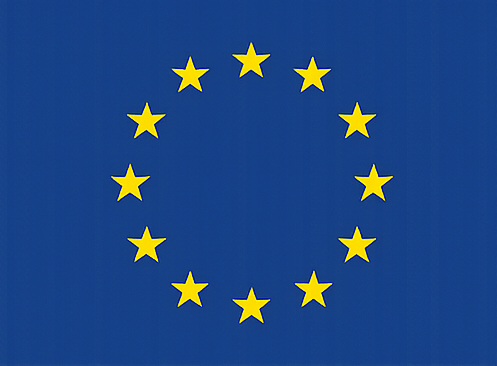Write an AI Security Policy Your Auditor Will Sign Off Instantly
Every modern organization using AI needs an AI Security Policy—a documented set of rules and controls that govern how AI systems are developed, used, and secured. But writing one from scratch can be daunting. What should it include? How do you ensure it satisfies auditors, whether internal, external, or regulatory?
In this guide, we’ll walk you through crafting a comprehensive, auditor-ready AI security policy aligned with EU regulations (GDPR, upcoming AI Act) and cybersecurity best practices. You’ll get:
- A clear outline
- Sample policy language
- Practical tips
- Inline citations to authoritative sources
1. Why You Need a Formal AI Security Policy
AI adoption is surging—73 % of companies have adopted AI in some form[^1]—and with it comes new risks:
- Clarity for Employees: Defines what is and isn’t allowed (e.g., “Do not input confidential data into unsanctioned AI services”)[^2].
- Incident Prevention: Mandates security controls (access, testing, oversight) to reduce AI-related breaches.
- Audit & Compliance: Demonstrates proactive risk management under GDPR and the EU AI Act.
- Accountability: Assigns roles (e.g., AI Security Officer, Data Protection Officer).
- Trust & Reputation: Shows regulators and clients you handle AI responsibly[^3].
2. Key Components of an AI Security Policy
Your policy can be standalone or part of your Information Security Policy. At minimum, include:
2.1 Purpose & Scope
Purpose: Establish guidelines for secure and ethical AI development and use, protecting data and ensuring compliance with GDPR and the AI Act.
Scope: Covers all AI systems (ML, automated decisions, NLP) and all personnel (employees, contractors, third parties).
2.2 Definitions
Define key terms—AI system, High-Risk AI (per EU AI Act Annex III)[^4], Personal Data, etc.
2.3 Roles & Responsibilities
- AI Security Officer: Oversees risk management and policy enforcement.
- AI Development Teams: Conduct risk assessments, implement secure development.
- IT Security Team: Integrates AI into SIEM, performs security testing.
- Data Protection Officer: Ensures GDPR compliance, conducts DPIAs.
- AI Governance Committee: Reviews and approves high-risk AI uses.
- All Employees: Follow usage guidelines (e.g., no sensitive data in unapproved tools)[^2].
2.4 AI Inventory & Classification
- Maintain an AI Inventory: system owner, data inputs, risk level.
- Label and apply enhanced controls to high-risk AI per Annex III[^4][^5].
2.5 Secure Development & Deployment
- Risk Assessment: Before deployment and periodically thereafter; include bias, privacy, and security risks[^6].
- Data Governance: GDPR-compliant data use; minimize and bias-test datasets[^7].
- Security Testing: Adversarial/red-team testing; vulnerability scans; document results[^6].
- Human Oversight: Human-in/on-the-loop for high-impact AI decisions (AI Act Art 14)[^5].
- Access Control & Logging: Restrict model and data access; log inputs/outputs into SIEM[^8].
- Output Handling: Sanitize AI outputs to prevent XSS or injection attacks[^9].
- Model Integrity: Verify external model hashes; encrypt and back up weights.
2.6 Third-Party AI & Vendor Management
- Vendor Assessment: Require ISO 27001/SOC 2 reports, GDPR-compliant DPAs, no-training clauses[^10].
- Approved Services Only: Use only vetted AI tools; prohibit unsanctioned services[^2].
- Ongoing Monitoring: Reassess vendors on policy or behavior changes.
2.7 User Guidelines
- No Sensitive Data in Unapproved AI[^2].
- Treat Outputs with Skepticism: Verify critical recommendations.
- Transparency: Disclose AI involvement per EU AI Act.
- Report Anomalies: Immediately flag dangerous or unexpected outputs.
2.8 Monitoring, Logging & Incident Response
- Activity Logging: Record key inputs, outputs, user IDs[^11].
- Continuous Monitoring: SIEM alerts for model-extraction patterns.
- Incident Response:
- Contain (disable the AI system)
- Investigate root cause (prompt injection, misuse)
- Notify regulators (AI Act, GDPR breach rules)
- Remediate and document lessons learned[^12][^13]
- Post-Incident Review by AI Governance Committee
2.9 Compliance & Audit Alignment
- EU AI Act: Fulfill risk management, documentation (Annex IV), conformity assessments[^5].
- GDPR: Conduct DPIAs, uphold data-subject rights (Art 22).
- Industry Standards: Map to NIST AI RMF, ISO/IEC 27001.
- Audit-Ready Binder: Maintain risk assessments, training records, test reports, meeting minutes.
2.10 Training & Awareness
- Mandatory Training: For all AI stakeholders—policy contents, secure practices, real-world AI failures[^7].
- General Awareness: Include AI guidelines in company-wide security training.
- Drills & Exercises: Tabletop scenarios of AI incidents.
- Acknowledgment: Employees must sign off on the policy.
2.11 Enforcement & Exceptions
- Enforcement: Violations lead to disciplinary action (up to termination)[^2].
- Reporting Violations: Confidential reporting channels with whistleblower protections.
- Exceptions: Documented, time-boxed exceptions approved by CISO (and DPO if applicable).
- Policy Governance: Annual review and updates by the AI Security Officer or CISO.
Sources
[^1]: PwC Research via Hut Six Security – “73 % of companies have adopted AI in some form.”
[^2]: Hut Six Security – “Do not input confidential data into unsanctioned AI services.”
[^3]: Hut Six Security – “Failure to address AI risks exposes organizations to vulnerabilities, jeopardizing reputation.”
[^4]: ISACA White Paper – EU AI Act Annex III definitions of high-risk AI systems.
[^5]: ISACA White Paper – EU AI Act Article 14 on human oversight and Annex IV documentation requirements.
[^6]: Trend Micro – “Security testing and red-teaming for AI systems.”
[^7]: ISACA White Paper – Data governance, DPIAs, and bias mitigation under GDPR.
[^8]: ISACA White Paper – Logging and traceability requirements for high-risk AI.
[^9]: The Hacker News – Sanitizing AI outputs to prevent XSS and injection attacks.
[^10]: TechCrunch – Vendor assessments, ISO 27001/SOC 2, and GDPR DPAs for AI services.
[^11]: ISACA White Paper – Activity logging and record-keeping for AI under the EU AI Act.
[^12]: TechTarget – Updating Incident Response Plans for GenAI breaches.
[^13]: EU AI Act (artificialintelligenceact.eu) – Article 15 on resilience to attacks and reporting timelines.

